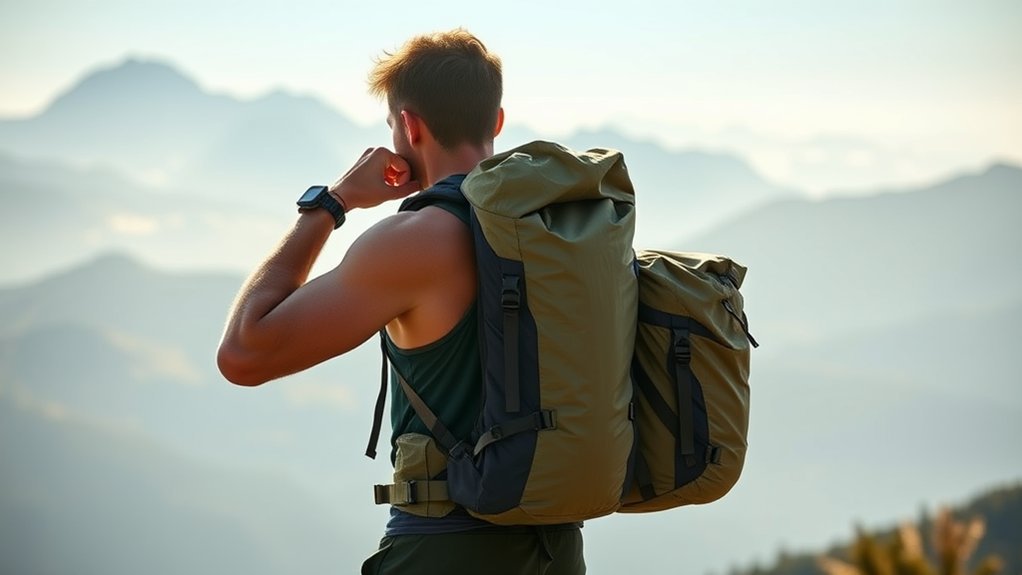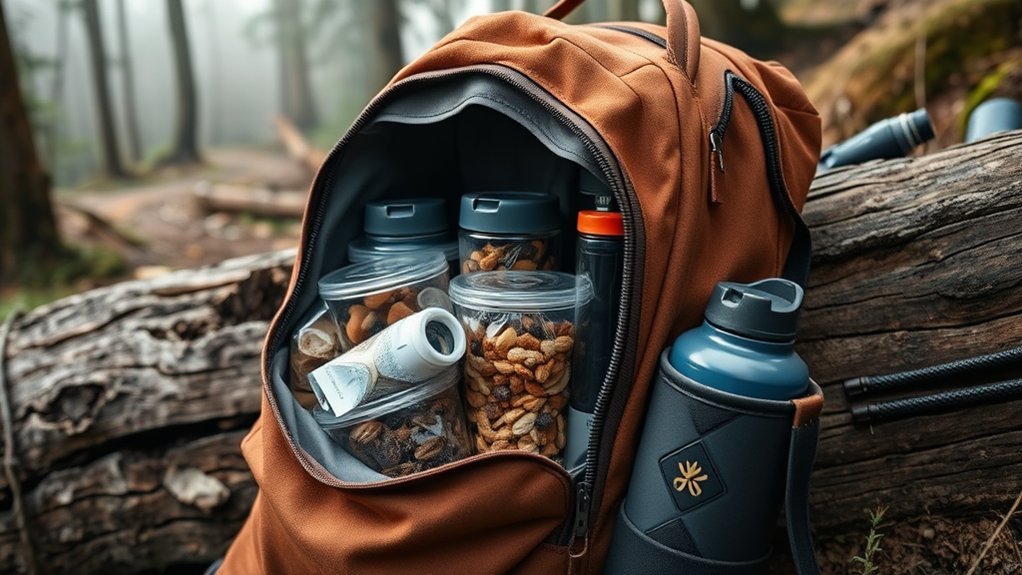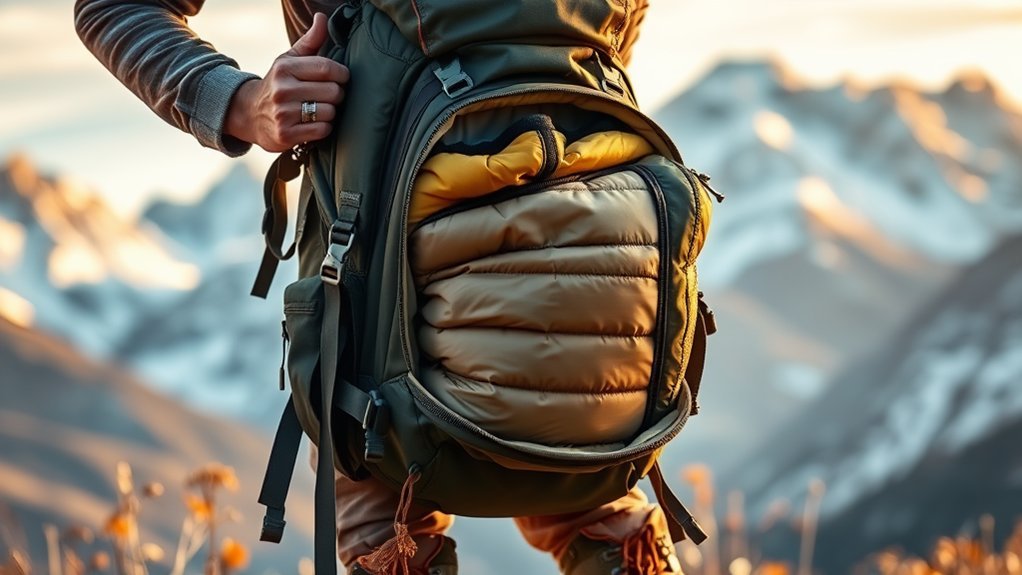Ever wondered why your shoulders are screaming after just an hour on the trail? Let's talk backpack weight – it's a game-changer that most hikers overlook. I've spent countless miles testing different loads, and I can tell you that even a few extra pounds can make you burn an extra 1,000 calories daily while hiking. Pretty wild, right? After years of hauling gear through mountains and valleys, I've learned that finding your sweet spot with pack weight isn't just about comfort – it's about making every adventure better, safer, and more fun. Whether you're planning to knock out a quick day hike or tackle a month-long trek, I'm going to break down exactly how to dial in your perfect pack weight. No fancy jargon, just straight-up useful info to keep you moving strong on the trail.
Understanding Pack Weight Guidelines and Body Weight Ratios

Many hikers wonder about the right pack weight for their adventures, and it's actually pretty straightforward when you follow some basic guidelines. We recommend keeping your backpacking Pack weight under 20% of your body weight, while day hiking backpacks should stay between 10-15%. For example, if you weigh 150 pounds, you'll want to carry no more than 30 pounds of gear for backpacking trips.
As you become more experienced, you might find yourself going even lighter with your items. We always suggest that beginners start with a lightweight approach to build up their strength and confidence. By carefully selecting your gear and staying within these body weight ratios, you'll enjoy better mobility and reduce your risk of fatigue or injury on the trail.
The Big Three: Pack, Shelter, and Sleep System Weight
When planning your backpacking gear, it is essential to understand the "Big Three" – your pack, shelter, and sleep system – since they'll make up most of your base weight. For comfortable backpacking, we need to keep the combined weight of these items between 9-12 pounds. This leaves plenty of room for carrying water, food, and other essentials while maintaining a lighter load.
| Item | Target Weight | Purpose |
|---|---|---|
| Backpack | 2-3 lbs | Carrying gear |
| Shelter | 2-3 lbs | Protection from elements |
| Sleep System | 3-4 lbs | Warmth and comfort |
Standard Vs Lightweight Vs Ultralight Backpacking Categories

Most backpackers can be grouped into three main categories based on their pack weight: standard, lightweight, and ultralight. When we're starting out, we'll likely fall into the standard category with a base weight of 20-30 pounds, often due to carrying too much gear and clothing.
As we gain experience, we can shift to becoming lightweight backpackers, keeping our base weight between 10-20 pounds by being selective with our gear list. The most dedicated among us might pursue ultralight backpacking, where the big three and other backpacking gear stay under 10 pounds total.
While ultralight requires expensive lightweight gear and comfort trade-offs, we can achieve a comfortable lightweight pack without spending too much – it's all about making smart choices with what we carry.
Essential Strategies for Reducing Base Weight
The path to lighter backpacking starts with understanding exactly what's in our packs. By weighing each item and tracking our base Weight for Backpacking, we'll make smarter choices about what to carry. Let's focus on carrying less weight by upgrading our gear strategically.
| Item Category | Standard Weight | Lightweight Option | Weight Saved |
|---|---|---|---|
| Sleep System | 4.5 lbs | 2.5 lbs | 2.0 lbs |
| Pack | 5.0 lbs | 2.5 lbs | 2.5 lbs |
| Shelter | 6.0 lbs | 2.8 lbs | 3.2 lbs |
| Rain Jacket | 1.2 lbs | 0.5 lbs | 0.7 lbs |
As a general rule of thumb, we'll get the most impact by upgrading our "big four" – pack, sleeping bag, sleeping pad, and shelter. Sharing gear among hiking partners and choosing multi-use items helps make our pack feel lighter without sacrificing essentials.
Smart Food and Water Weight Management

Managing food and water weight effectively makes a huge difference in our overall pack weight, especially since these consumables often account for a significant portion of what we're carrying. Let's explore smart ways to handle food and water needed for backpacking while keeping our load manageable.
Plan meals carefully, aiming for 1.5 to 2.5 pounds of food per person per day, and repackage items into lightweight containers to save weight. Ditch original packaging and transfer items like trail mix into simple zip-top bags.
Use water filters or purification tablets instead of carrying excess water – they're lighter and let's refill from natural sources. Create a detailed packing list for food and water that accounts for your trip length and available water sources, helping avoid overpacking while ensuring you have what you need.
Common Overpacking Mistakes and Solutions
When backpackers hit the trail carrying far more than needed, they're often making common overpacking mistakes that can turn an enjoyable hike into an exhausting ordeal. We often bring that extra pair of underwear or kitchen gadgets we don't really need, adding unnecessary combined weight to our packs. A fully loaded backpack typically weighs much more than necessary when we're uncertain about what to bring.
Start by laying out everything and questioning if you'll really use each item. Replace heavier gear gradually as your budget allows. The big secret is reducing the number of items rather than focusing on expensive ultralight equipment. Multiple items serving the same purpose? Choose one and leave the rest behind.
Seasonal Considerations for Pack Weight Adjustment

Seasonal changes dramatically affect how we adjust our pack weights throughout the year. Let's explore how to carry a little more or less depending on conditions. Whether you're day hiking or planning longer adventures, your small pack weighs around different amounts as seasons shift. Using a kitchen scale helps track these adjustments precisely.
Summer packs stay light with minimal gear and energy bars. Winter loads increase with extra layers and everything else needed for cold conditions. Spring/Fall requires flexible packing in your stuff sack based on variable weather. Small amount adjustments make big differences in comfort across seasons.
We'll maximize our freedom on the trail by smart seasonal packing – how much should your backpack contain depends entirely on when you're heading out and what Mother Nature has in store.
Frequently Asked Questions
How to Lighten Backpack Load?
Let's minimize our load with ultralight gear selection, efficient packing strategies, and smart organization. We'll focus on weight reduction by choosing lightweight materials and balancing essentials for ideal comfort and freedom.
Is 40 Lbs Too Heavy for a Backpack?
Like a boulder weighing down your spirit, 40 lbs is definitely too heavy. We recommend keeping your backpack weight limit between 20-30 lbs for ideal, preferred, or perfect comfort, efficiency, and freedom on the trails.
What Is the Proper Weight Distribution in a Backpack?
Let's optimize our load by placing heavy items close to our back, centered at shoulder height. We'll distribute medium-weight gear in the middle, and keep lighter items at the bottom and top.
Is a 35 Pound Backpack Heavy?
Since 20-30% of body weight is the ideal backpack weight guideline, we'd say a 35-pound pack is definitely heavy for most hikers. Let's aim for a more comfortable 20-25 pounds instead.
Conclusion
Now you know the ins and outs of backpack weight – it's not rocket science, but it definitely matters for your outdoor adventures. Keep that pack under 20% of your body weight, pay attention to your main gear choices, and be smart about what food and water you're lugging around. I've spent countless miles on trails figuring this stuff out, and trust me, a well-balanced pack makes all the difference. Ready to test your newfound knowledge? Grab your gear, weigh your pack, and start making those weight-saving tweaks. Your back will thank you on your next hike.